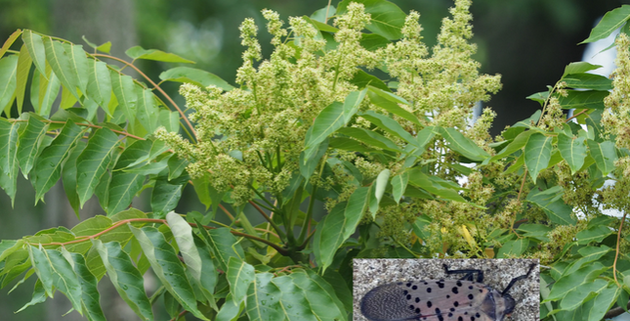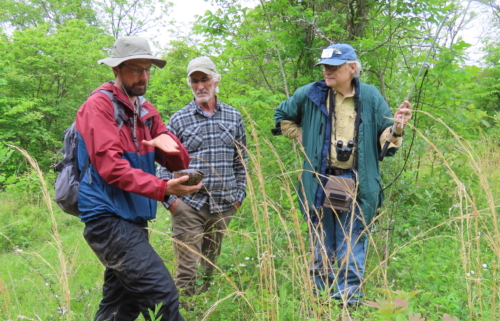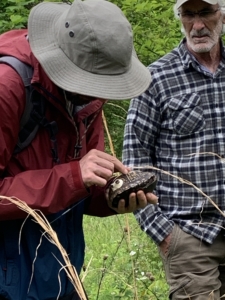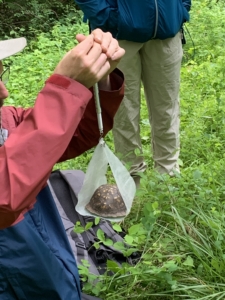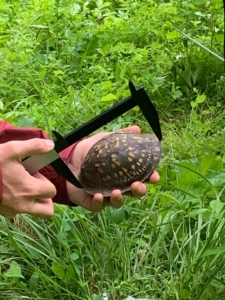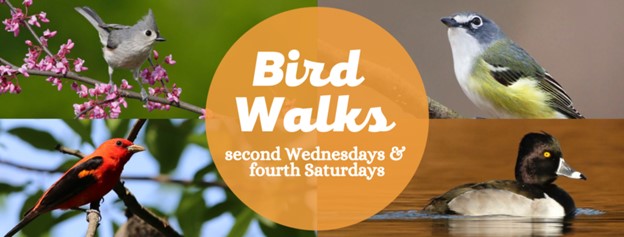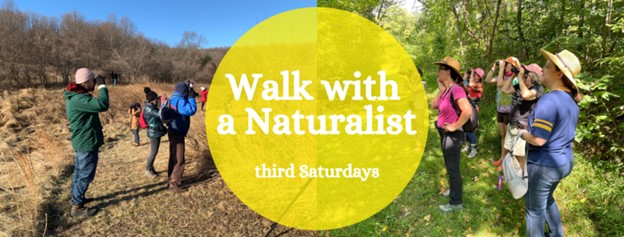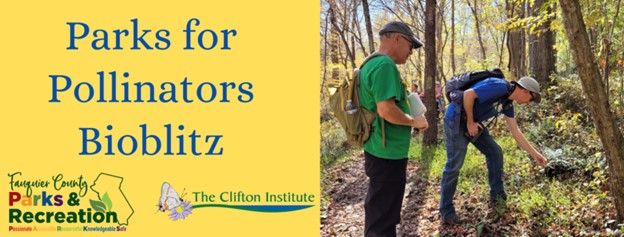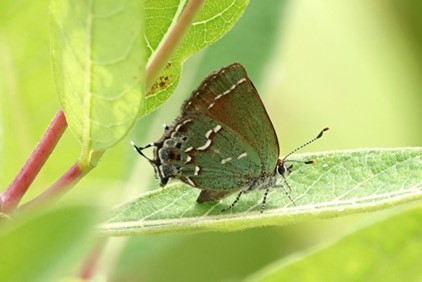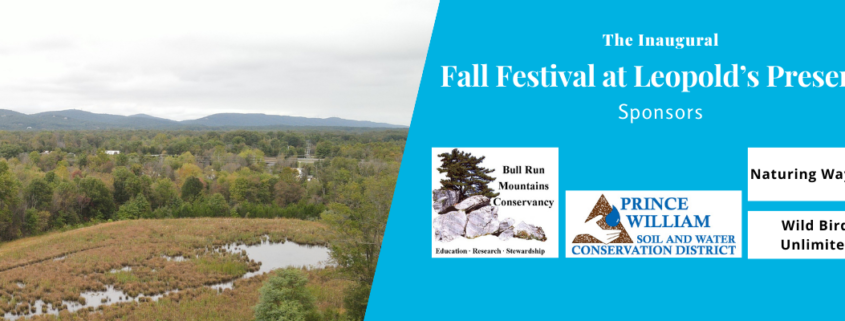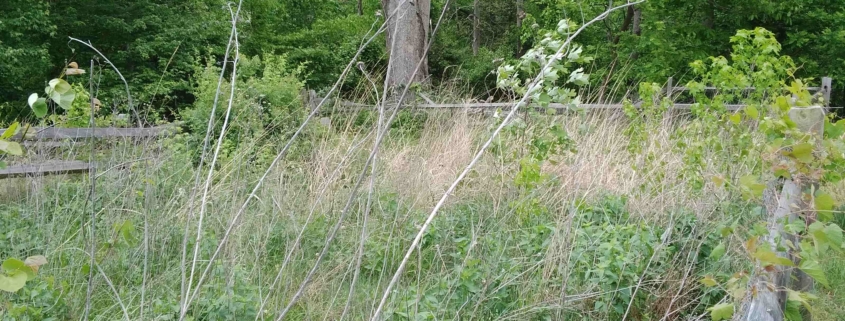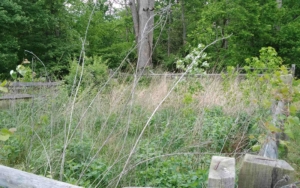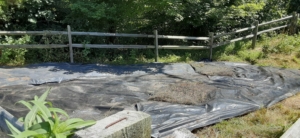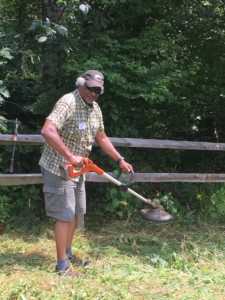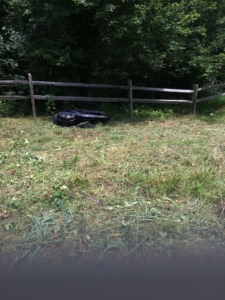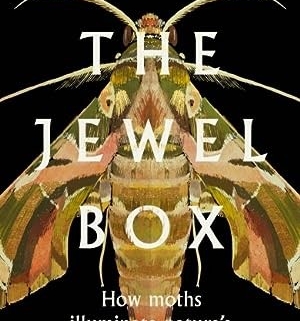Tree-of-Heaven is Not Heavenly!
Photo: Plant NOVA Natives
Article by Cindy Speas, Chair, Fairfax County Tree Commission
In summer many folks travel to the Shenandoah Valley and beyond for recreational opportunities. Driving in any direction from Northern Virginia in the growing season, there is a tree that can be seen everywhere along the highways and byways. The dramatic clusters of seeds are so large they look like giant flowers among the leaves. It’s not native walnut or native sumac—it is Ailanthus altissima, commonly called Tree-of-Heaven. Disturbed areas and right of ways along roads are perfect locations for this opportunistic pest to colonize. Ailanthus is popping up in suburbia as well, and those of us who love trees wonder why experts are calling for us to remove these attractive and fast-growing specimens from our properties as soon as possible?
Ailanthus was imported from China and widely distributed in the United States as an ornamental in the late 1700s and 1800s. Its behavior, though, is far from heavenly—it spreads aggressively through root sprouting and huge seed production; it grows to maturity rapidly with a very long taproot; it is characterized by its terrible odor; and it poisons the ground around its roots with chemicals, in a process called allelopathy. This prevents native trees and plants from growing nearby, allowing Ailanthus to quickly spread and dominate our landscape.
Additionally, Ailanthus is the preferred food source for a new invasive insect—the Spotted Lanternfly (SLF). In spite of state quarantines, this destructive pest has now been found in Fairfax County. It is a major threat to some of Virginia’s agricultural areas, especially our vineyards, peach orchards and hops. It is also a threat to native tree species like oaks and maples that thrive in our yards. Forest Pest Branch asks all residents to report Ailanthus here and report Spotted Lanternfly sightings here.
Some may ask why these non-native trees should be removed—don’t they at least provide shade and shelter in a warming world? They certainly can, but they crowd out our native oaks, beeches, hickories and maples, as well as failing to provide the critical food resources that native insects and other animals need to live and reproduce in a fully functioning, healthy ecosystem. If a plant like this is killing off or threatening major parts of our local natural food web, the entire system will eventually collapse. And we will lose our native tree canopy along the way.
How can we stop the spread of this nasty invasive? The first thing, of course, is not to purchase it in the first place! So be sure to learn how to identify it. You can become familiar with the iNaturalist app on your smartphone or use other online resources to name the plant. The second is to remove the tree if it is growing on your land. This pest, however, thrives when simply cut down, so strategies must be used to kill the root system right away. There are some excellent resources to help landowners eliminate this threat safely and efficiently. Blue Ridge Prism has excellent fact sheets with details about herbicide use for this and other invasive species.
Visit Plant Nova Natives for more information about invasives and their destructive roles in our native environment. If we could eliminate a threat like the Tree-of-Heaven, that would truly be heavenly.


